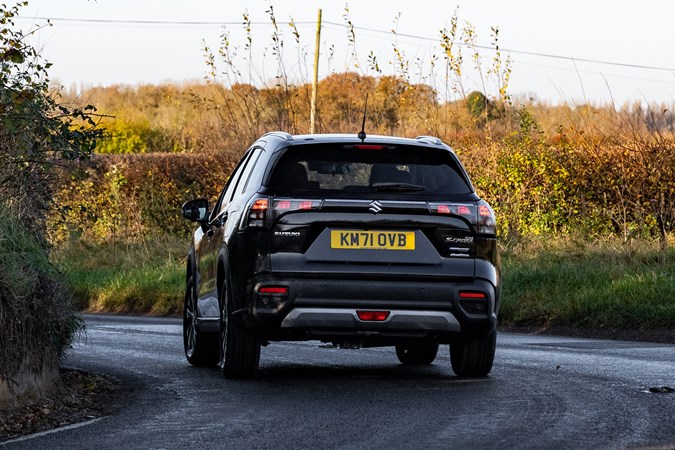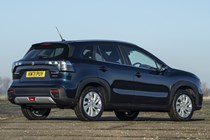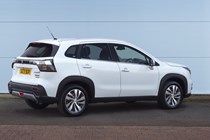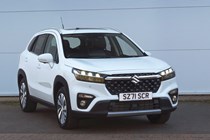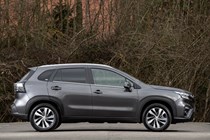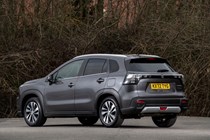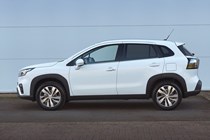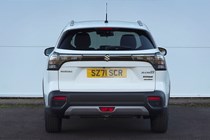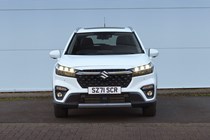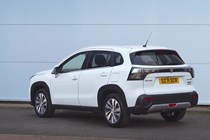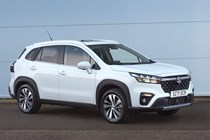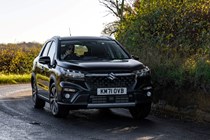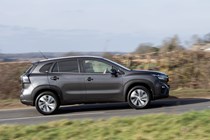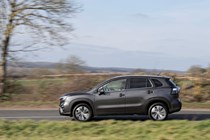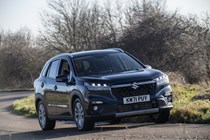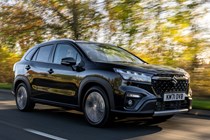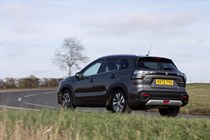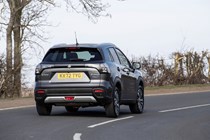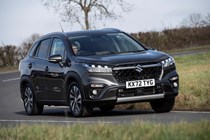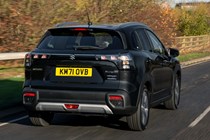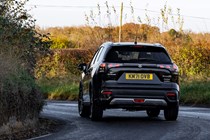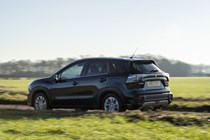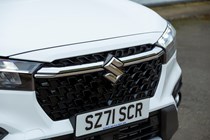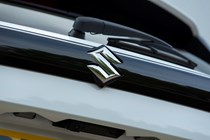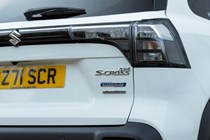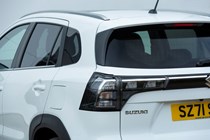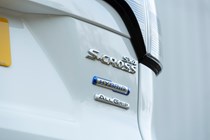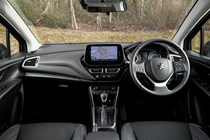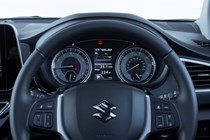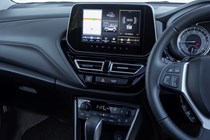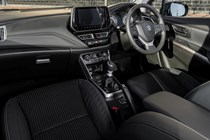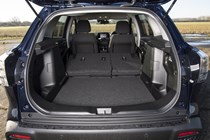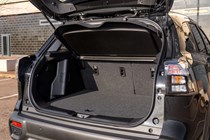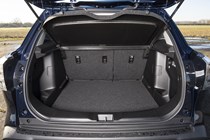
Suzuki S-Cross long-term test
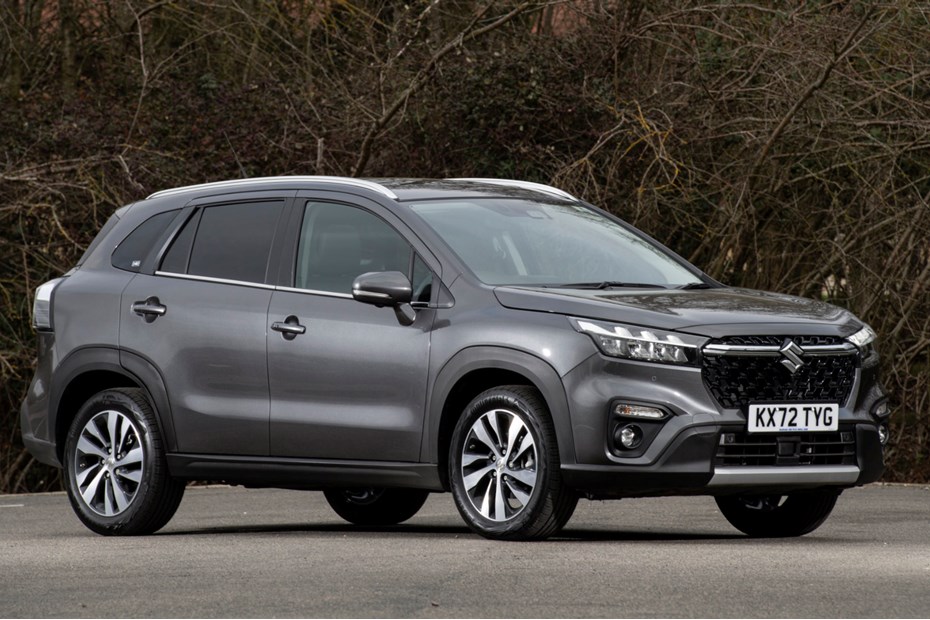
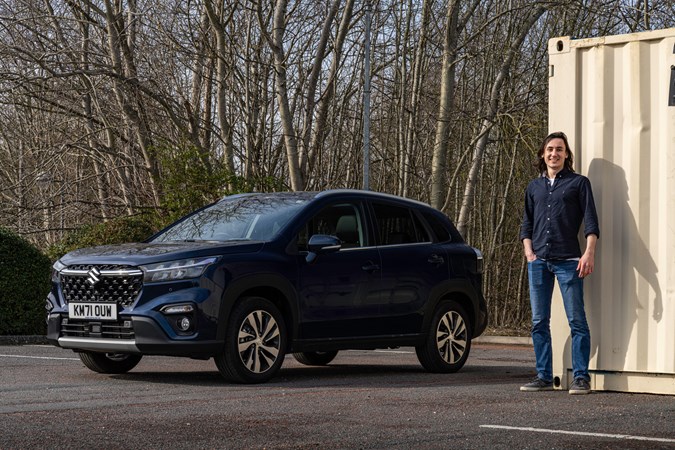
Suzuki makes a compelling argument against the adoption of complicated technology. The S-Cross is a lesson in what modern drivers actually need from a car – and the sort of frivolous technology they can do without. We’re running the range-topping Ultra model to see how well Suzuki has struck the balance, and whether it’s still comfortable to live with daily.
Reports by Luke Wilkinson
Jump to:
- Update One: Welcome
- Update Two: Distance
- Update Three: City Slicking
- Update Four: Storage
- Update Five: Petrol vs. Electric
- Update Six: Farewell
Update One: Welcome
I like Suzuki. Shortly after I landed my first job in car journalism, I got behind the wheel of the current-generation Swift Sport – and I was completely smitten before I’d reached the barrier in the company car park. So bad is my affliction, I’ve been scouring the classifieds for the past three years in the hope used prices will tank enough so I can afford one.
The Swift Sport’s biggest plus point was its weight. Early cars weighed less than a tonne, as the bodies were made from thin-gauge metal and they only came with enough equipment to make them comfortable. Superfluous toys (electric seats, four-zone climate control, laser-guided self-levelling electrically operated tailgates and the like) were left on the shelf.
This nimble kerb weight made the Swift Sport feel fast and handle sweetly. Also, because its featherweight body didn’t put much of a strain on the engine, it was pretty economical – which is especially important now that petrol is approaching £1.80 a litre.
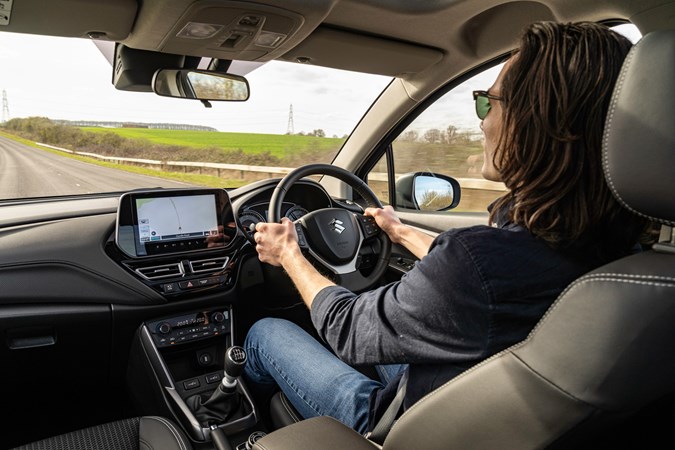
So, it was a welcome surprise when I arrived at Parkers and found out that I’d be running the latest S-Cross as my long-termer. And I’m happy to report that Suzuki has applied the same lightweighting principles to this SUV as it did to the Swift Sport.
This S-Cross is the flagship, four-wheel drive Ultra variant but, despite the extra differential and all the added equipment, it only weighs 1,330kg. Opt for the most basic two-wheel drive model and this figure falls to 1,235kg. For comparison, the flagship four-wheel drive Nissan Qashqai tips the scales at 1,570kg – and that’s a difference you can really feel on the road.
Because it’s not carrying any extra bulk, the S-Cross floats over bumps with greater ease than rivals such as the SEAT Ateca. Its bantamweight frame also makes its 1.4-litre petrol engine feel very eager, despite the fact it only produces 129hp and 235Nm of torque. It picks up very well – I’ve surprised a few expensive German cars at the lights around London.
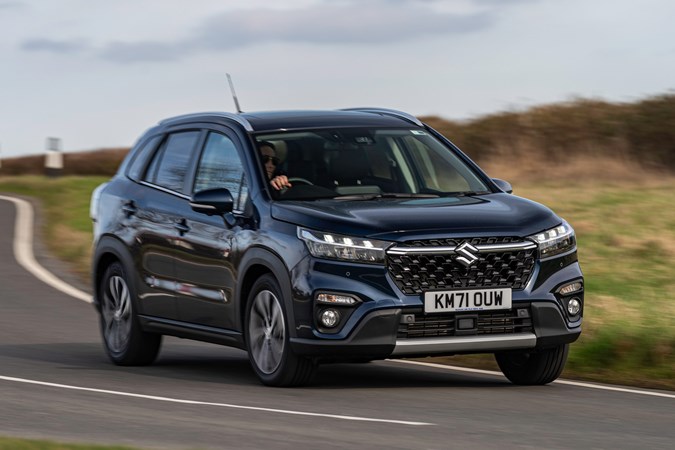
Initial impressions suggest that the S-Cross will be cheap to run, too. I’ve averaged around 44mpg so far which, as an interesting side note, is around 5mpg more than I was getting from a (supposedly more economical) plug-in hybrid-powered MG HS.
It’s not perfect, though. The front collision warning system seems to have been calibrated to err on the side of caution. The bonger chimes almost every time I approach a line of stationary traffic, despite the fact I’ve got my foot on the brakes and I’m slowing down. I’ll have worn off the writing on the button by the time it goes back to Suzuki.
The boot is also quite a bit smaller than the Qashqai or the Ateca’s at 430 litres. However, it does have a two-position boot floor, and the backrest for the rear bench can be stood up more vertically, which might help to make the most of the available space. I have some big family trips planned for the future, so I’ll let you know how I get on.
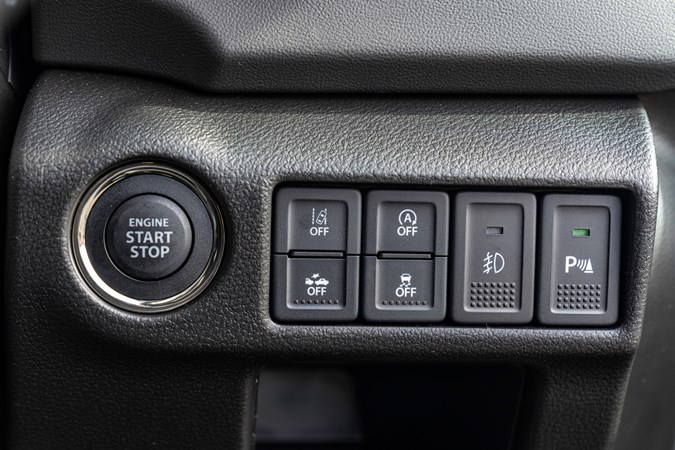
These minor foibles aside, my first couple of weeks with the S-Cross have been carefree. It’s nippy, it’s easy on petrol, it’s spacious and it’s comfortable. Sure, some of the interior plastics are a bit cheap – but you shouldn’t expect ultra-premium quality from a car of this sort, especially when you consider that this range-topping, four-wheel drive S-Cross is around £15,000 cheaper than the most basic Audi Q5. And that makes it look like a bargain.
Mileage: 2,381
Average fuel economy: 43mpg
Update Two: Distance
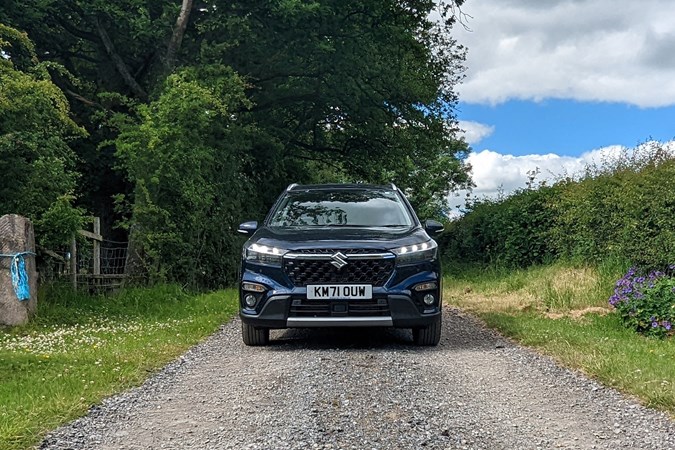
I’m writing this update from my pokey flat in London – and anyone from my corner of the city who spends more than five minutes in the same room as me can tell that I’m an outsider. I’m originally from way up north, near the Scottish border on the outskirts of the Lake District. And, because I hate how rude everyone is down south, I try to escape to my family home as often as possible.
I’ve been borrowing the Suzuki S-Cross for a few months now, but I’ve only recently managed to make the trip back home as work commitments and a particularly vindictive bout of the coronavirus have shackled me to the capital. Earlier this month, though, I kicked the bat flu into touch, found a gap in my calendar and made a run for it.
It turns out the S-Cross is a good companion if you need to cover big distances. Contrary to my usual route (and on the recommendation of Waze), I drove up the A1 to Scotch Corner and entered Cumbria from the east, rather than using the M6 to pass into the county from the south. It’s a much nicer drive with some truly gorgeous scenery once you’re off the east coast.
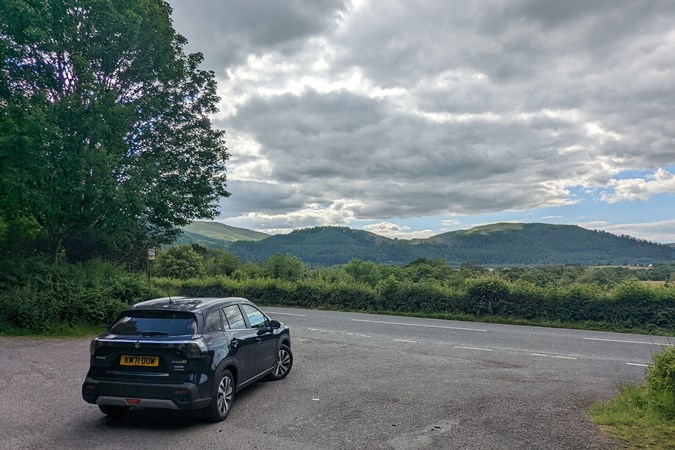
The Suzuki gobbled up the 300-odd miles admirably well. The lack of lumbar support in the seats meant I was a bit hobbled when I got out of the car on the other side, although that could also be because I elected to do the entire journey in one go rather than stopping off for a coffee and a stretch.
Much to my surprise, the S-Cross’s engine didn’t leave me wanting for more performance and, despite travelling at motorway speeds for most of the journey, it still managed to average around 43mpg. Which my wallet certainly thanked me for now that petrol has passed £1.80 a litre. Chalk that up as a win for lightweight engineering over complicated hybrid tech.
The suspension’s proving capable, too. It’s just firm enough to withstand crosswinds, but supple enough to shrug off high-speed bumps. It handles rural back roads admirably, too. There’s plenty of travel, which means you can tackle unpaved farm-tracks with gusto – and the dampers do a reasonable job of filtering out the sort of vibrations you get from washboard gravel.

Sadly, I didn’t get a chance to test the four-wheel drive system to its full extent, as the field I was planning to paddock-bash was full of alpacas. However, a couple of blasts along some dirt and gravel roads with the drivetrain locked in four-wheel drive gave me an inkling of the car’s capability. In a hatchback it would have been a bit unnerving, but the S-Cross felt sure-footed.
It’s not all smooth sailing, though, because the car’s front collision warning system is growing ever more cantankerous as the miles roll by. In addition to shouting at me whenever I approach a line of stationary traffic, it’s now taken to recognising parked cars (that aren’t even in front of the sensor) as imminent safety threats.
Full disclosure for the next couple of paragraphs: they sound like the rant of a parish councillor. But bear with me – I’ve got a point to make about the car, too. Now, there’s a blind right-hand bend on the road leading up to my Mam and Dad’s house, and the chap who lives in the property on the left-hand side of the road likes to park his car smack-bang in the middle of the corner, conveniently blocking the view of the road ahead. I’ve nearly had several head-on collisions because of it. The image below is unrelated to the tale by the way; it’s there to lighten the mood a little.

He’s been asked to park his car on his driveway, which is mere feet away from where he likes to abandon it, but he’s remaining as stubborn as a Labrador being dragged away from his local park. And, because of his mulish attitude, every time I rounded that corner the Suzuki’s collision warning system thought I was about to have a horrendous accident worthy of a piece on the local evening news. The AEB system even activated once, even though I had loads of right-hand lock on.
So, if you’re reading this Osamu Honda (which is quite an unfortunate name for Suzuki’s chief technical officer), I largely approve of your work on the new S-Cross. But, when it’s time to facelift the car, could you please dial back the sensitivity on the collision avoidance system? Or at least change the chime. It’s as shrill as a screeching toddler.
Mileage: 5,150
Average fuel economy: 43mpg (still)
Update Three: City Slicking
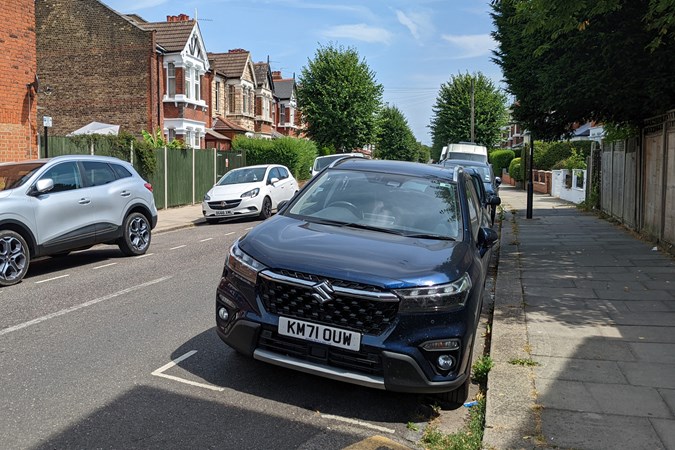
I don’t think SUVs make good city cars. They’re wide, they’re tall, they’re a nuisance to park and they’re about a million times more polluting than a conventionally sized city car. Despite this, almost everyone in my corner of London insists on tooling around in BMW X5s and Audi Q7s. It winds me up something rotten – and I’m ashamed to be contributing the problem now I’m running the S-Cross.
I try to avoid driving in London as much as possible, but we needed to venture out of the city last week on a flat-hunting mission – and that meant dealing with the (slightly) organised chaos that is the North Circular. To be fair to the S-Cross, it did a reasonable job of cutting through the traffic.
Unlike a lot of the cars in its class, visibility is great. The windows are large, the rear headrests don’t block your view and the width of the pillars can be measured in inches rather than yards, which makes it easier to spot rogue cyclists and moped riders. The steering is light, too, so the only sweat you work up around town is from swearing at white van drivers.
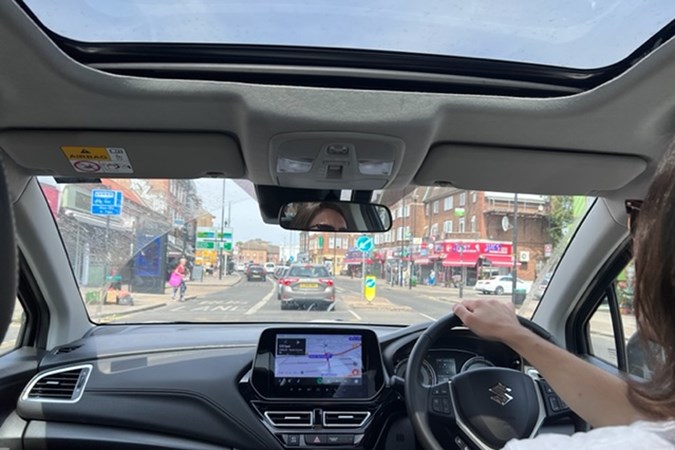
It’s also slightly smaller than the Nissan Qashqai, which means it’s a little less practical but a lot easier to weave through congestion. It reminds me of my old Mini in a way, because it’s basically a box on wheels. You can see all four corners of the car from the driver’s seat, too, which makes it a doddle to barge into gaps in traffic. It’s great fun, even at 20mph.
I also love the sunroof. Until I started running the S-Cross, I’d never driven a car with a full-length sunroof and now I’m concerned I won’t be able to go back. It makes the cabin so much airier, which I find very welcome on gloomy British mornings. It’s even better on sunny days. If you’re considering an S-Cross, I urge you to fork out the extra cash for it. You won’t regret it.
However, I’ve fallen out of love with the S-Cross’s infotainment system. The built-in sat-nav system has a very irritating setting that warns you about every single junction you pass on the motorway – and it drives me insane. The southern end of the A1 has a junction every few miles, and the announcement is a constant interruption for whatever music I’m listening to. Planet Rock played The Eagle has Landed by Saxon the other day and it completely ruined the solo. I was fuming.
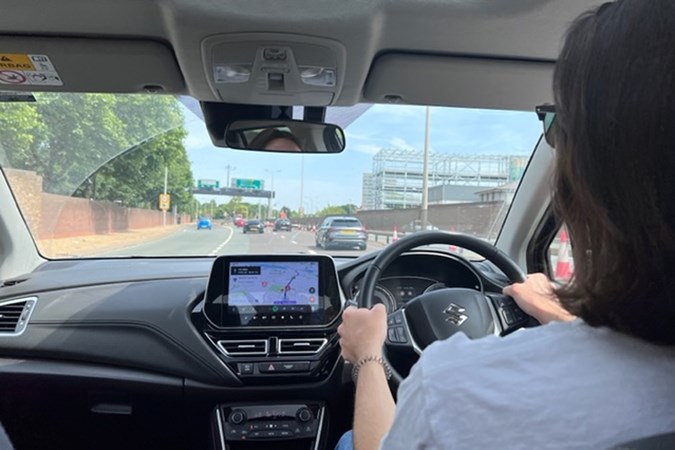
So, I recently became a full-time Android Auto user – and it’s much better. It’s the first time I’ve ever used the system as, until recently, I didn’t own a smartphone powerful enough to run the software. The tech works well with the S-Cross for around 90% of the time, but it sometimes doesn’t send my calls through the car speakers and microphone.
Strangely, there’s no rhyme or reason to the outages. Earlier this week, I was on my way back home from the airport when my Mam called to tell me my best mate had just caught Covid. I could talk to my Mam fine through the car’s microphone, but the second I tried to wish my mate well, the connection broke and directed him through my phone’s tiny speakers.
These trifling niggles aside, I still think the S-Cross is a well-rounded package. You can’t expect perfection when prices are this cheap – and I’ve seen first-hand that the Suzuki certainly can’t deliver it. In my book, though, the joy of razzing around in a car that’s cheap, fun and light far outweighs the convenience of clever technology.
Mileage: 6,146
Average fuel economy: 44.2mpg
Update Four: Storage
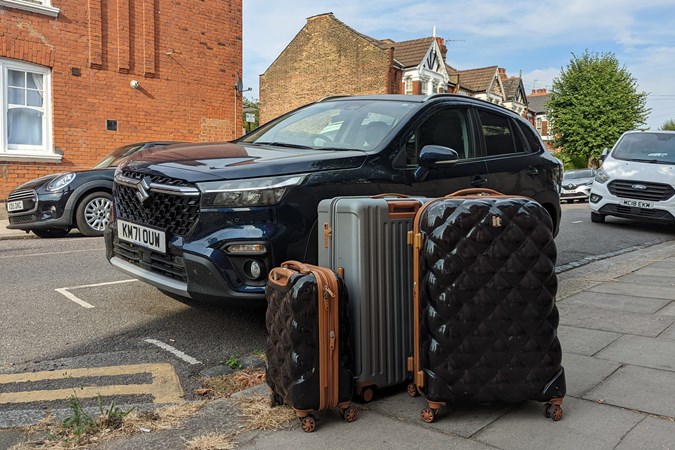
I never really ranked storage space highly on my motoring priority list. I learned to drive in an old Mini, so I guess I got used to dealing with a tiny boot and having nowhere convenient to put my phone. But the Suzuki S-Cross does storage space very well so, for this update, I thought I’d walk through some of my favourite aspects of the car’s practicality.
I’ll start with the boot. As I mentioned in an earlier report, it measures 430 litres. That sounds a little meagre next to the Hyundai Tucson’s massive 620-litre capacity or the Nissan Qashqai’s 504-litre space. In my experience, though, it’s more than big enough to handle daily life.
My girlfriend and I have travelled all over the UK in the S-Cross and we haven’t been pushed for space yet. The boot’s big enough for a pair of large suitcases, with enough room left over for a couple of cabin bags and some loose items. However, I’ll admit that I had to put the rear seat back in its more upright position to get all the bags to fit without crushing them against the tailgate.
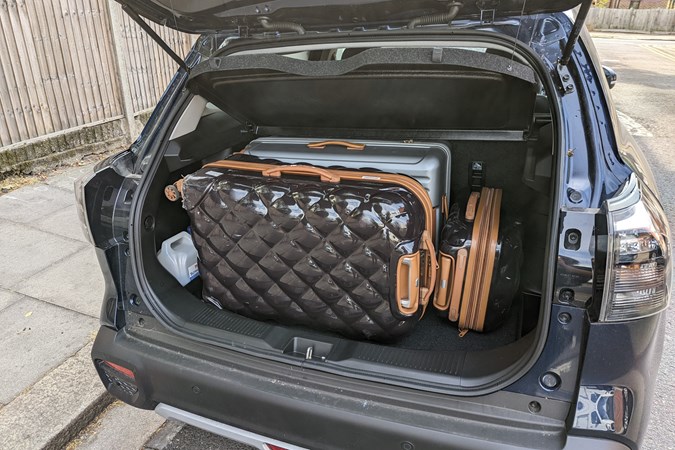
This would have impacted the comfort of those in the back if we were carrying passengers as well as cargo, which is something to bear in mind if you’re thinking about buying an S-Cross to haul your family around. Grumpy teenagers will no doubt grumble about the seats.
I like that the S-Cross’s parcel shelf still fits over the top of the cases, as it’s a good deterrent for thieves. It’s a very tight fit – the top edge of the case brushes the underside of the shelf – but a miss is as good as a mile in my book.
I’m not sure I completely understand Suzuki’s two-position boot board (below). You can lay it flat on the boot floor for a bit of extra storage volume or raise it up to a higher position to eliminate the loading lip. Those two seem reasonable to me – but there’s also a strange middle setting which makes the board stick out of the boot floor at a 45-degree angle. Answers on a postcard, please.
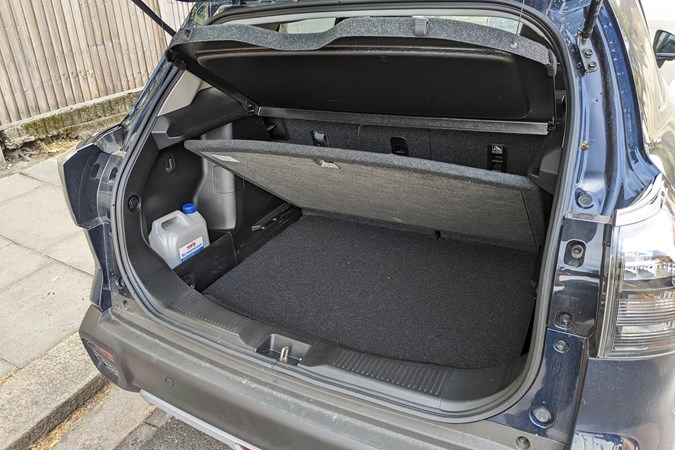
That aside, Suzuki has thought carefully about the items its owners will carry around with them and sized the S-Cross’s storage bins to suit. For example, those little panniers in the boot behind the wheel arches are perfectly sized to hold a bottle of screen wash. It’s a good fit, too, which means it doesn’t rattle around and drive you mad.
Moving forward, the drinks holders in the door cards are (very satisfyingly) the ideal size to hold a litre water bottle, while the bins are tall enough to keep items like house keys out of sight of prying eyes. I wish Suzuki had made the tray in the centre console a little deeper, though, as the end of my phone pokes out of the dash and I keep getting tangled in my charging cable when I change gear.

I also love the sunglasses tray in the roof. I didn’t know I needed one until I encountered it in the S-Cross. British weather changes more often than the price of a pint in Covent Garden, which means I’m constantly donning and removing my shades, normally throwing them around the cab as I fumble to find somewhere safe to put them. Having a proper storage tray is much easier.
Mileage: 6,854
Average fuel economy: 43.6mpg
Update Five: Petrol vs. Electric
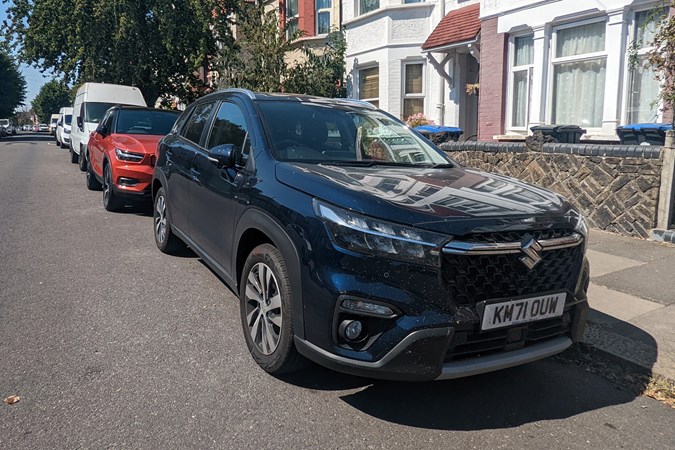
In early August, I borrowed a pure-electric XC40 from Volvo, which gave me the rare opportunity to compare petrol power with electric power. It also made me think about the future of motoring and forced me to reflect on how far the car has come in the past century.
I’m a firm believer that we’ve already reached the peak of what’s possible with a petrol engine. Modern fuel injection systems and clever mild hybrid technology (like you’ll find on the Suzuki S-Cross) have made small displacement engines more powerful and more economical than engineers from the 1960s and 1970s could ever have dreamed of.
Now, a four-wheel drive family SUV like the Suzuki S-Cross can achieve better fuel economy figures than a fuel-sipping family saloon from the middle of the 20th century. I’ve been getting a steady 44mpg from the S-Cross while it’s been in my care, which is around 10mpg more than your grandad could extract from his Mk1 Ford Cortina 1200, even though the Cortina weighs half as much and has a smaller engine. That’s impressive progress.
Progress has stopped, though. Suzuki’s current line-up is now completely electrified – the S-Cross, Swift and Vitara all feature mild-hybrid assistance; the Swace estate is powered by a self-charging hybrid system and the Across SUV has a plug-in hybrid powertrain. But the brand’s next-generation combustion cars won’t make any huge leaps forward.
The next Suzuki Swift will arrive in 2024 and it’s expected to stick with the same 1.4-litre four-cylinder mild hybrid petrol engine found in the current car. This is likely because there’s little more left to extract from the technology – and it simply isn’t worth the time, effort or money to develop an even eco-friendlier petrol engine to meet the UK’s ever-tightening emissions regulations.
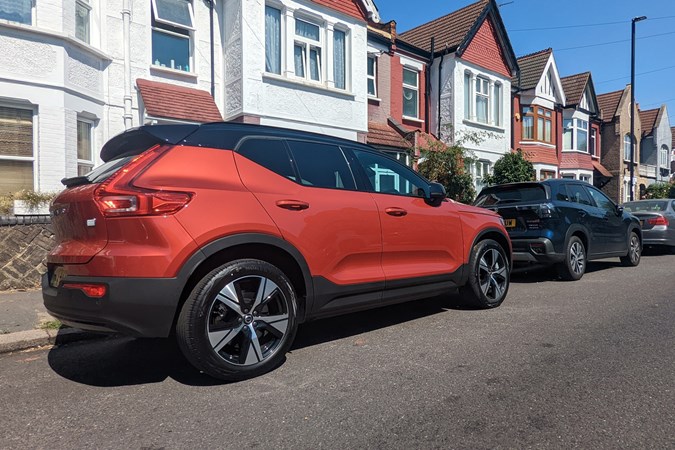
But EVs aren’t beholden to changing emissions laws and, while we’ve all but exhausted the development of the petrol engine, we’re only getting started on improving the electric powertrain.
Look at the XC40. It’s been on sale since 2020 and now offers a maximum range of 270 miles. But in the two years between its launch and now, manufacturers have already improved the electric car formula. Rivals like the Nissan Ariya and Kia EV6 can drive more than 300 miles before needing to be recharged, while industry-leading electric cars like the Tesla Model S and Mercedes EQS can travel upwards of 400 miles.
Electric cars have become more efficient much faster than petrol cars. Now, we’re simply playing a waiting game while manufacturers figure out how to make the technology affordable enough to replace the small petrol engines in family cars like the S-Cross. And it’ll happen. MG has already proved that it’s possible with the ZS EV and the 4 hatchback.
Having the electric XC40 around also made me think about how I’ve used the S-Cross over the last six months and whether I could have managed with an electric car in its place. The Volvo’s range is certainly long enough for my 90-mile commute and, because the office has a row of chargers in the car park, I always have plenty of juice in the battery for the return journey.
The Volvo is cheaper to fuel than the S-Cross, too. I paid £10 to brim the Volvo’s battery from 50% capacity at a lamp post charger, compared to £40 for half a tank of fuel in the S-Cross. And while a full tank of petrol in the S-Cross will get me further than a full battery in the XC40, I’m still quids-in when you look at the miles per pound figures. The Volvo can manage twelve miles of driving per pound of electricity, while the Suzuki only returns between five and six miles per pound of petrol.
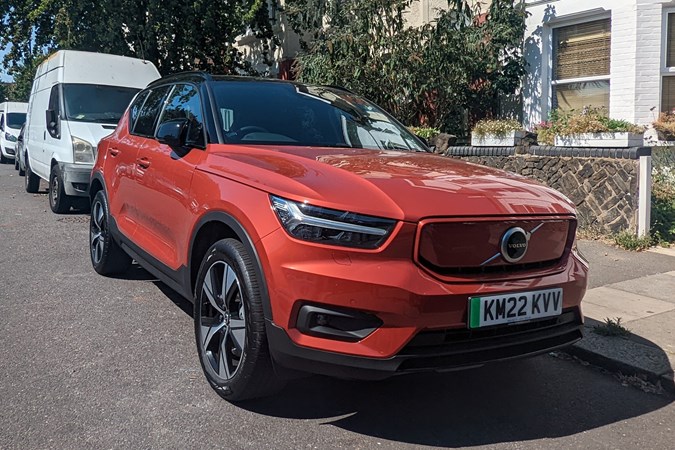
Living in London, I also don’t need to pay the congestion charge with the electric XC40, which is handy should I want to drive into the city centre for a spot of sight-seeing. The Volvo’s a lot quieter than the S-Cross, too, which makes it less of a chore to drive on the motorway. And charging ports are springing up more frequently in built-up areas – there are a trio of new lamp post sockets just round the corner from my flat, so topping up an EV isn’t as arduous as it used to be.
The only time I can see the S-Cross serving my needs better than the XC40 EV is when I venture up north. I’ve already mentioned in a previous report that I’ve made the 300-odd mile trip in one go on a single tank of fuel in the Suzuki, but if I made the same journey in the Volvo, I’d have to stop for an hour at Manchester to recharge. What’s more, there aren’t any electric car chargers near my family home, so I’d struggle to keep the Volvo’s battery topped up once I reached my destination.
These niggles will need to be ironed out if the electric car is ever to transition out of its Betamax phase and into mainstream acceptance. The shift away from petrol power will be tough – and I’ll be sad to see the death of fun (and affordable) petrol-powered family cars like the Suzuki S-Cross.
But if you can look past the higher purchase prices, EVs probably already serve family buyers better than petrol cars. They’re quieter, which will help keep young passengers happy; they’re cheaper to fuel and maintain, which will help keep your bank balance happy, and they have long enough ranges to serve even the most extreme school runs and commutes. The revolution is coming.
Mileage: 7,041
Average fuel economy: 43.8mpg
Update Six: Farewell
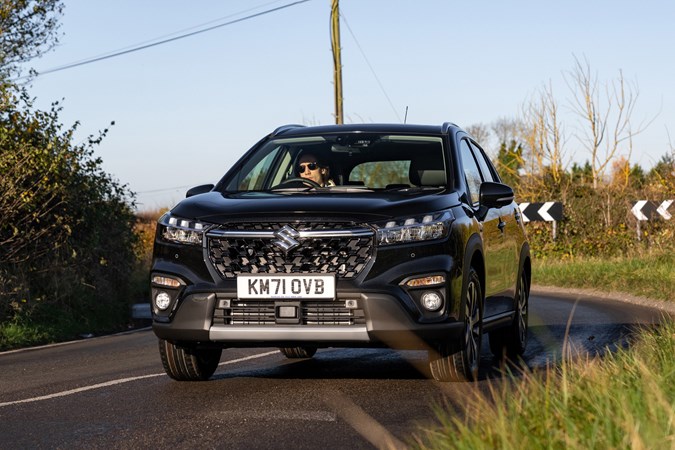
I’ve enjoyed the past six months with the Suzuki S-Cross, but now it’s time to say goodbye. It’s a certainly a sad day – but rather than writing a misty-eyed eulogy, I thought it’d be a better use of time and effort to give you a summary of the best and worst aspects of the car.
Overall, my experience with the S-Cross has been positive. I like the way it drives; I like how practical its cabin is and I’m impressed by its performance. Suzuki’s four-wheel drive system inspires a lot of confidence in poor weather conditions, too, although I wish I’d found time to test it off-road.
Being a green-lane novice, I was apprehensive about taking the S-Cross down a proper off-road track without a bit of guidance. It would have been an awfully embarrassing phone call to Suzuki to inform its mechanics that I’d dug the car they’d lent me two feet deep into a boggy bit of English countryside. Still, I’m confident the S-Cross could hold its own in the correct pair of hands.
Things I like about the S-Cross
It’s pretty fuel efficient. You’re probably sick of reading this, but I’m so impressed I feel the need to hammer the point home. No matter how I drove it, the S-Cross averaged 44mpg – and it hasn’t exactly had an easy life in my custody. I’ve spent a lot of time on the motorway and driven up some of the steepest roads in the Lake District, but the S-Cross’s economy gauge barely budged.
I love how light it is, too. I’ve banged on about this throughout my updates as well, but I’ve found it really refreshing to drive a modern car that weighs as little as the S-Cross. Suzuki’s appetite for lightweight engineering means its cars are great fun to drive – and it’s part of the reason why the S-Cross is so economical. I can’t figure out why more manufacturers haven’t taken the same approach.

Making lighter cars is the simplest short-term solution to reducing our environmental impact. A light car burns less fuel than a heavy car, which means you don’t need a complicated plug-in hybrid system to make it fuel efficient, which means you don’t need to dig a load of cobalt out of the ground to make battery packs. In the case of the S-Cross, it also means you get a family-sized SUV that feels no more unwieldy to drive than normal family hatchback.
Things I don’t like about the S-Cross
The built-in sat-nav system is infuriating. The map works fine, but the voice guidance is bad enough to pop veins in your forehead. I hate how it informs you of every slip road you pass on the motorway – the system constantly interrupts whatever music or news you have on the radio to warn of a hazard you’re perfectly capable of recognising with your own eyes. Just use Android Auto.
There’s a trade-off to the S-Cross’s nimble kerb weight, too. It isn’t particularly refined at high speeds, which might deter buyers that are downsizing from something like a big German saloon car. There’s quite a lot of road and wind-noise and, while it stands up reasonably well to a constant crosswind, it can get blown around by the sudden shock of a passing truck. I would have liked some lumbar support in the seats, too. My back was quite sore after driving the length of the A1 in it.
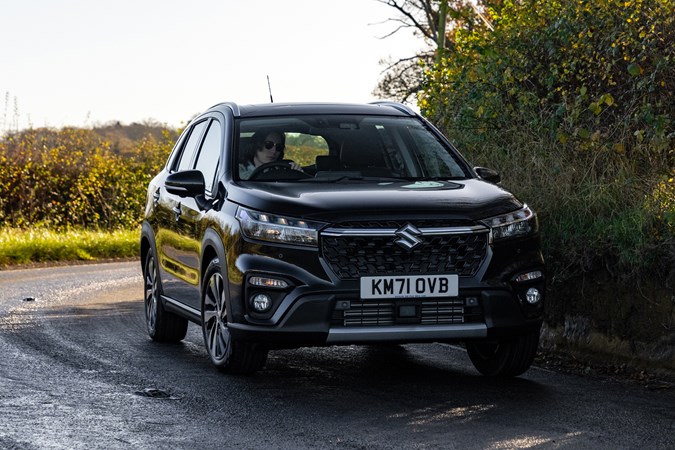
My tolerance for these sorts of issues is higher than most people, though, as I spent the first few years of my driving career behind the wheel of shoe-string budget, bodged-together classics. If you’re on the fence about getting an S-Cross, just make sure you get a decent test drive and spend some time on faster roads to make sure you can live with the racket.
Closing thoughts
If you need a family SUV, the Suzuki S-Cross is certainly one to consider. It maybe isn’t the best choice if you cover loads of miles or have tall teenage children with lots of cumbersome hobby equipment, but it should serve most buyers well for a fraction of the cost of go-to rivals like the Nissan Qashqai and Hyundai Tucson.
It put a smile on my face every time I got behind the wheel. The main drawbacks I found were its smaller-than-average boot, slightly poorer quality cabin plastics and a little less high-speed refinement. But I’d say that lot is worth sacrificing to save £4,000 over a similarly equipped Hyundai Tucson – and a Tucson for that money won’t come with four-wheel drive.
It’s also worth mentioning that, in the 5,000 miles I’ve covered in the past six months, the S-Cross hardly put a foot wrong. Its autonomous emergency braking system has had a couple of tantrums, but the rest of the car been as mechanically dependable as a single-speed bicycle. And what better recommendation is there than that?
Mileage: 7,426
Average fuel economy: 44.1mpg
